Juicer purchasing advice: how to choose the right product
- What you need to know
- Juicers turn fresh fruit and veg into juice that is healthier, more vitamin-rich, and cheaper than what you can buy in the supermarket.
- Pre-processed juices often contain added sugar, whereas self-pressed juice does not.
- Slow juicers gently make juice, centrifugal juicers make it quickly, and steam juicers can make a lot of juice at once.
- A large feed hopper means you don’t need to chop anything up beforehand – a great time saver
- Juicers should have a locking mechanism, overheating protection, and anti-slip feet for safety.
Daily dose of vitamins
Do you find it difficult to get your five a day? Fresh-pressed juices are a healthy and delicious way to improve your fruit and veg consumption. Making juice used to be a laborious task, nowadays with a juicer, it is quick and easy. This said, you can of course still get simple mechanical juice presses, but they are only suitable for making small quantities – if you want to make a lot of juice, go for an electric model. There is a huge range of juicers on the market with electric motors, that can make juice extremely quickly.
Vitamin-rich goodness
Juicers let you make healthy, vitamin-rich drinks whenever you want at home. They are a great option for anyone who values good nutrition and a healthy lifestyle. The fresh juice they make is full of vitamins as well as immune-boosting enzymes and molecules. This is especially helpful during the winter, as they can help your body fight off colds. A fresh juice in the morning is an ideal energy booster to start your day off right. Similarly, since juices are easy to digest, they are a good option for detoxing and weight loss diets.
An alternative to industrial juice
You can get really creative with an electric juicer. While manual juicers are only suitable for citrus fruits, electric ones can juice a huge range of fruit and veg. Not only can you create some exciting flavor combinations, you can also control how much sugar there is in your juice. A lot of industrially-produced juices have a lot of sugar, and not a lot of fruit. Moreover, since this juice needs to be pasteurized to be shelf stable, a lot of the nutrients that did exist in the raw fruit are gone.
Compared to supermarket juice, homemade juice has many more vitamins, and much less sugar. The most important thing is that you know exactly what is going into your cup. While juicers are less convenient than just picking up a carton from the store, what you get back in taste and nutrition is well worth it.
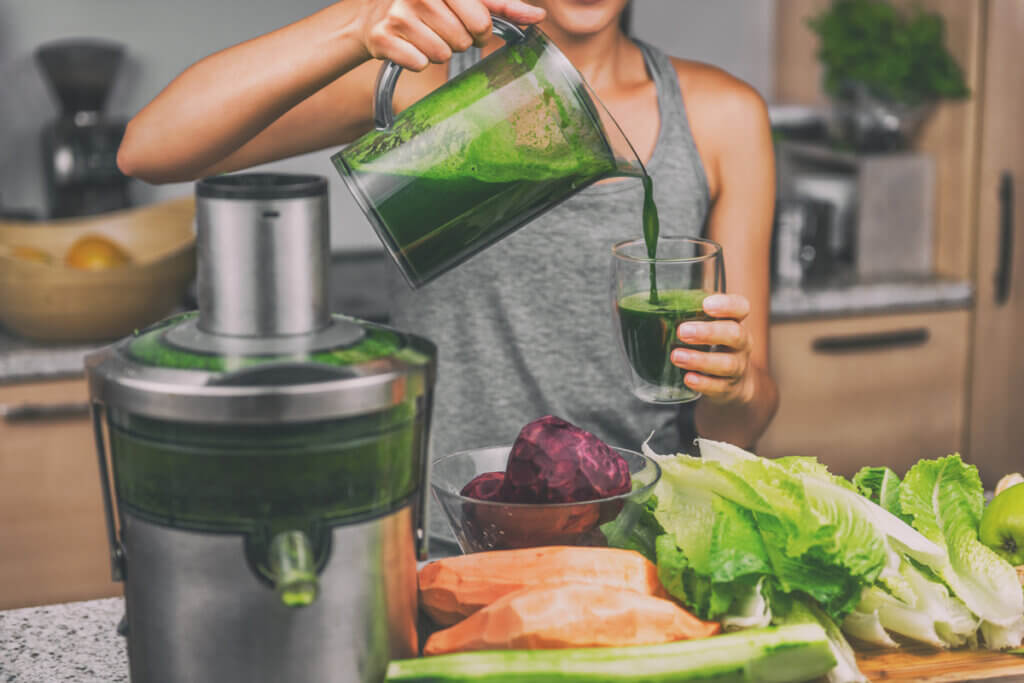
Whether it’s a glass of orange juice in the morning, or a complex detoxing juice, juicers are a fantastic addition to any well-equipped kitchen. Electric juicers used to be difficult to use, even harder to clean, and extremely loud. However, nowadays, modern juicers are quiet, simple, and efficient. A lot of them can do more than just juice – depending on the model, you can also make plant milks, hummus, and even sorbet. Read on for an overview of what to look out for, so you can make the best decision when buying a juicer.
Types of juicer
When looking for a juicer, it’s inevitable that you will come across terms like citrus press, slow juicer, centrifugal juicer, and steam juicer. While they all do produce juice, they are all quite different in how they work:
- Citrus juicers: by muscle power and lever action.
- Slow juicers: by pressing screws
- Centrifugal juicers: by centrifugal force
- Steam juicers: by steam
Each of these types has various advantages and disadvantages. The following table gives a brief comparison that might help you pick what style is best for you:
| Buyer group | Ideal juicer |
|---|---|
| Occasional juice drinker | Juicer |
| Impatient saver | Centrifugal juicer |
| Vitamin fanatics and greens lovers | Slow juicers |
| Patience lovers | Steam juicers |
Depending on the mechanism, different amounts of nutrients are retained, and the juice will keep for differing amounts of time. Read on for an overview and analysis.
Citrus juicers
Mechanical citrus juicers are the simplest and cheapest type of juicer available on the market. They can be used on citrus fruits like oranges and grapefruits. They have a simple design, consisting of a ribbed pressing cone and a collection container. To juice a citrus fruit, you have to halve it and squeeze it over this cone. The ribs help to break down the fruit, causing its juices to come out. Some models come with a sieve which removes the pulp from the juice.
Mechanical citrus juicers are small, easy to use, and don’t need a power connection. They can be used wherever and whenever, and produce high quality juice. Since they are manual, they don’t produce much heat, which means all of the vitamins and enzymes in the fruit are preserved. Juice made in this way can be kept for up to three days in the fridge. However, the amount of juice you get per fruit is less than with electric juicers. They are a great option for making small quantities of juice, but less good for larger amounts. Moreover, you won’t be able to juice things like apples and carrots – you can only really do citrus fruits with mechanical juicers.
Plier and lever presses
Tired of sticky hands when using your citrus juicer? Fortunately, there are two mechanical juicers that offer a solution. Plier presses look like massive garlic presses, and they work in a similar way. To use them, put half of a fruit in the bowl, and then squeeze the two handles together. Lever presses are free standing machines. They are bulkier but less effort to use than plier presses. Once you pull down on the lever, the juice will go directly into a glass underneath.
You can get electric citrus juicers as well. They have a motorized pressing cone which rotates of its own accord, so you don’t really need to put in much effort. While they are quick, they don’t destroy any of the vitamins in the fruit. If you want to drink orange juice multiple times a week, they might be a good option for you.
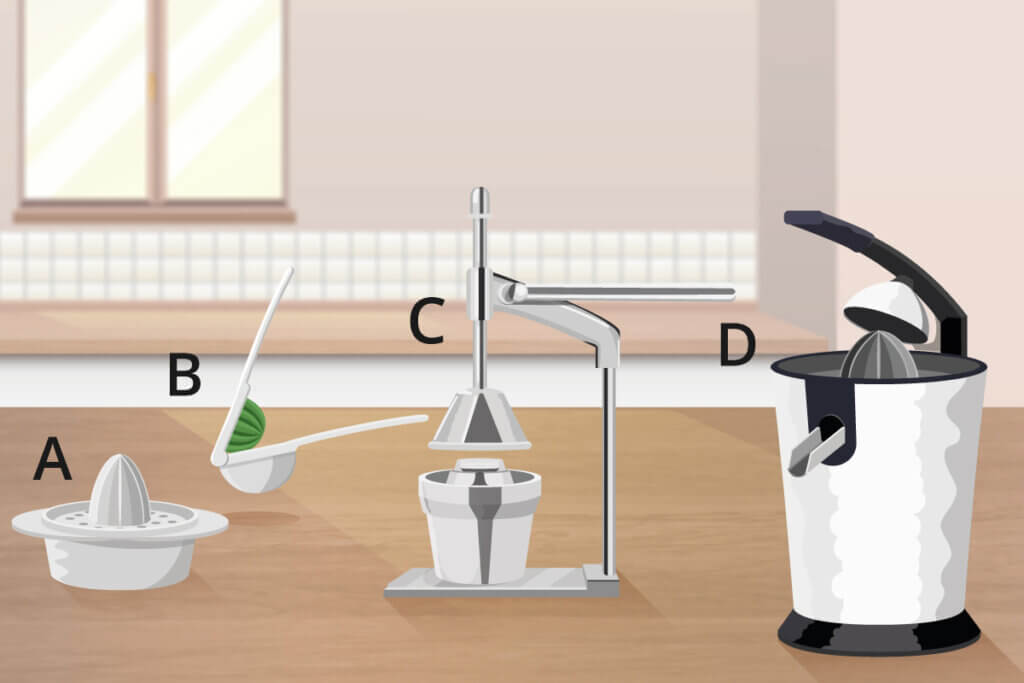
Centrifugal juicer
Centrifugal juicers work, as their name suggests, using centrifugal force. Unlike citrus juicers, you can juice loads of different vegetables – some models do struggle with fibrous foods and root vegetables though. They aren’t as gentle as slow juicers, but they are extremely fast.
How they work
Centrifugal juicers are comprised of a feed chute, sieve basket, juice container, and pomace container. The lid has an opening which you put the fruits and vegetables into. Compared to slow juicers, this opening is usually quite big – so you can juice ingredients as a whole. They work by spinning whatever is inside against a conical sieve which has lots of small sharp grater holes at up to 15,000 rpm. These tiny holes are extremely effective in separating the juice out of the fruit and veg.
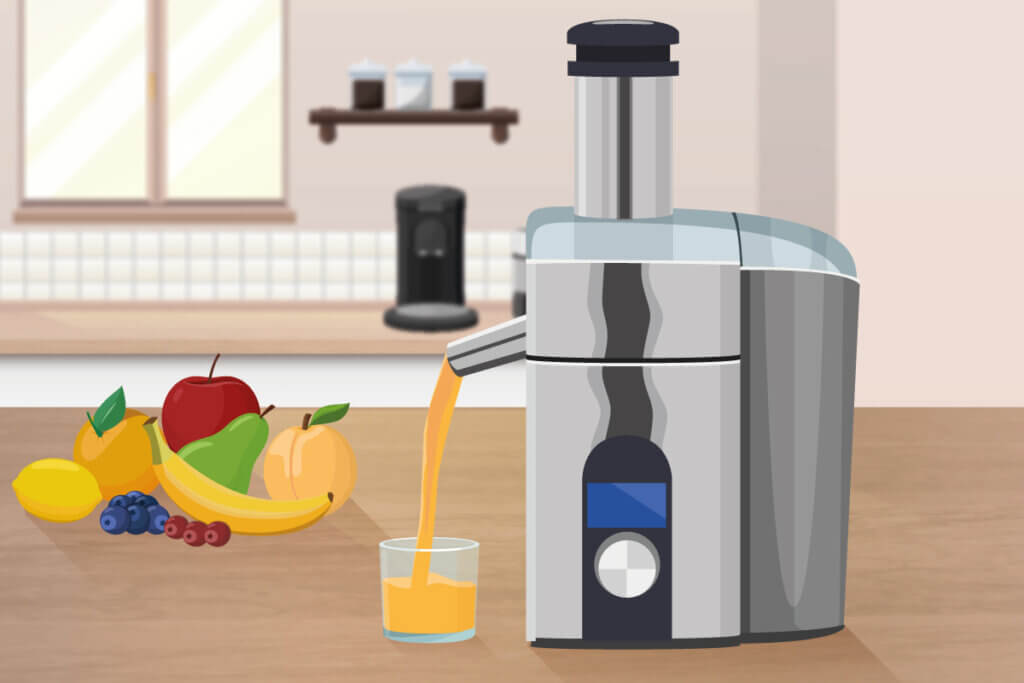
As the sieve rotates at a high speed, it ejects the juice through the lateral surfaces into a juice tray. From there, the ready-to-drink product passes through the outlet into the juice container. The residues collect in the integrated pomace container.
Disadvantages
Since they work at high speed, centrifugal juicers do end up producing quite a lot of heat. This does destroy some of the vitamins and enzymes in the fruit and veg, but the juice you get is still very healthy. Moreover, the spinning introduces a fair amount of oxygen into the juice. This means that the juice is quite foamy and won’t last as long in the fridge. Centrifugal juicers are a good option if you want juice fast, and you’re planning on drinking it immediately.
Storage
While store-bought juice will last for a long time in your fridge, juice made with a centrifugal juicer oxidizes quickly so it needs to be drunk quickly. You should only keep it for up to 48 hours. If it starts to bubble, or tastes a bit sour, that means it has started to ferment.
Slow juicers
Slow juicers can make juice from nearly any fruit or vegetable, including nuts and fibrous foods, but you’ll have to wait for it. They usually come with a few different sieves, which means you can make juices with different consistencies, as well as sorbet, nut milk, and frozen yogurt.
How they work
As their name suggests, slow juicers work gently and take a while to produce juice. Instead of being spun at high speed, the raw fruit and veg you put in them gets pressed slowly. Since they work so gently, they don’t produce much heat, which means that most of the vitamins and nutrients end up being preserved in the juice. The juice they produce is homogenous, non-foamy, and tastes better than that from other juicers.
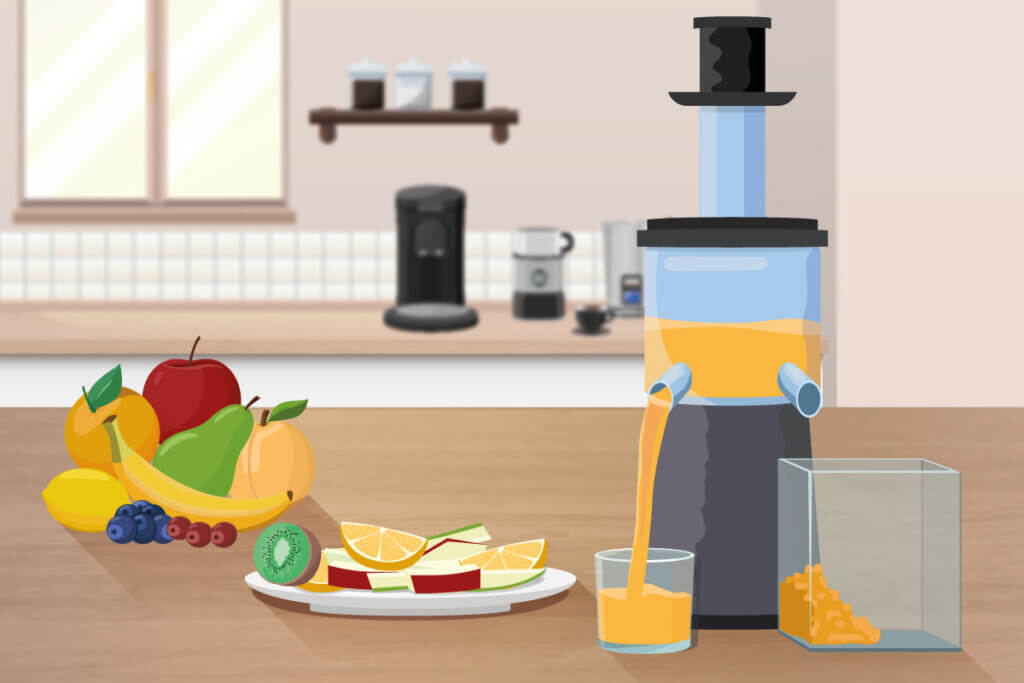
Very little oxygen gets into the juice, which means it can be kept for a long time. One other advantage is that they are extremely quiet, much more so than centrifugal juicers.
Types of slow juicer
There are two main types of slow juicer. They are similar in design, except that one has a vertically installed press, and the other has a horizontal one. If you’re planning on making juice from green leafy vegetables a lot, then a horizontal design will be better, otherwise it doesn’t make much difference.
Irrespective of whether they are vertical or horizonal, all slow juicers have a motor driven press which first breaks up and crushes the ingredients into a pulp, before pressing it through a sieve. The dry pulp gets collected in a separate container, while the juice goes into another one. Unlike centrifugal juicers, there’s no need to scrape pulp residue out of the machine.
Disadvantages
The main disadvantage, as you might be able to guess, is that slow juicers take a considerable time to make juice. Not only does pressing the plant matter take a while, you also have to chop it up beforehand. If you overfill a slow juicer, or don’t chop your vegetables up enough, you can end up with a blocked machine. If you want quick fresh juice in the morning, get a centrifugal or citrus juicer. If you have the time and want the most nutritious juice possible, go for a slow juicer.
Steam juicers
Steam juicers, also known as hot juicers, are a great option for producing large quantities of juice. Most models consist of three pots that stack on top of one another: a fruit basket, collecting container (with hose), and cooking pot. The bottom pot holds the water, which gets heated into steam to start production. The steam rises to the top and breaks up the fruit, causing the juice to burst out. This juice gets filtered through a sieve before running into the collection container.
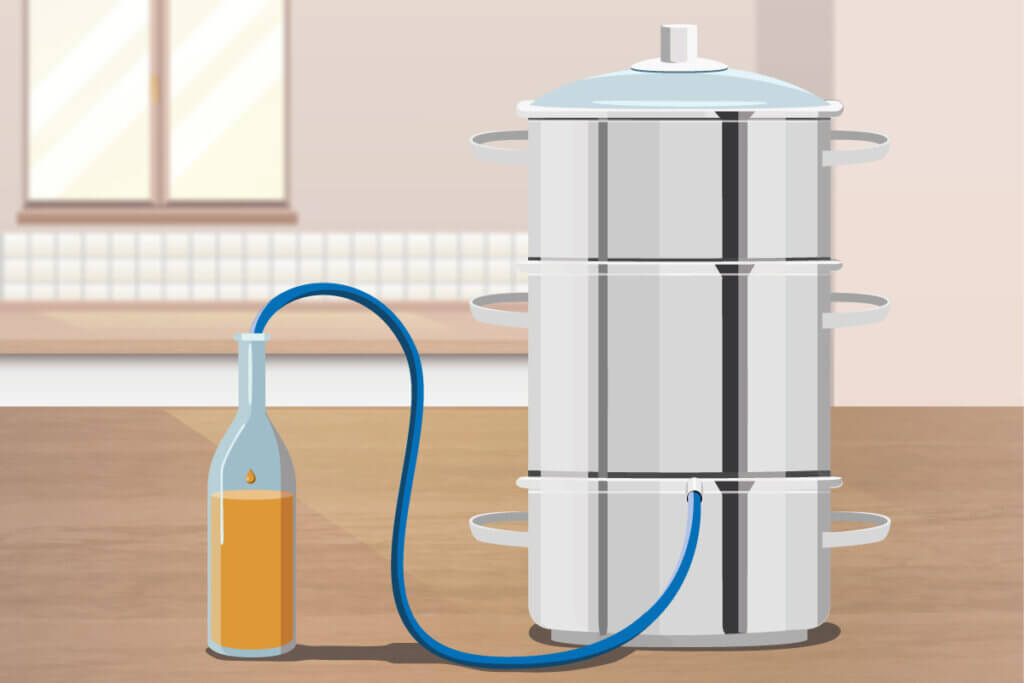
The entire process usually takes around two hours, so steam juicers aren’t an option if you want juice fast. They are best for processing large quantities of fruit and veg. Since they heat the juice up, some nutrients are lost, but it means that you can store it for a few months.
Purchase tips
There are a few things you need to look out for when choosing a juicer. Read on for an overview.
Power
The amount of power required depends on the type of juicer. Slow juicers typically need between 150 and 200 watts, whereas centrifugal juicers tend to have a power output of over 1000 watts. This is because centrifugal juicers need to be able to spin at up to 1500 rpm, whereas slow juicers turn at around 80 rpm.
The amount of power you need also depends on what you want to juice. Soft fruits don’t need juicers with particularly strong motor, but harder fruits and fibrous foods need stronger ones. Depending on what you are juicing, you can set how much power you need on some models.
Noise
Some manufacturers specify how loud their juicers are. Depending on style and model, some juicers are nearly silent, whereas others are extremely loud.
Yield
Power isn’t everything, how much juice you get also depends on how long the motor can run for before overheating. Most centrifugal juicers can last for up to a minute, whereas slow juicers can run for up to 30 minutes. Centrifugal juicers often obtain a higher juice yield than other styles of juicer. You can tell how much juice you’re getting based on how dry the leftover pulp is. While the juicer does play a role in yield, so too do the ingredients you use.
Feed chute
The size of the feed chute for any juicer will determine how much you need to chop your ingredients up beforehand. While most slow juicers have small funnels, some centrifugal juicers have large openings – big enough to put a whole apple in. If you want a juicer with a large opening, look for ‘wide mouth’ one.
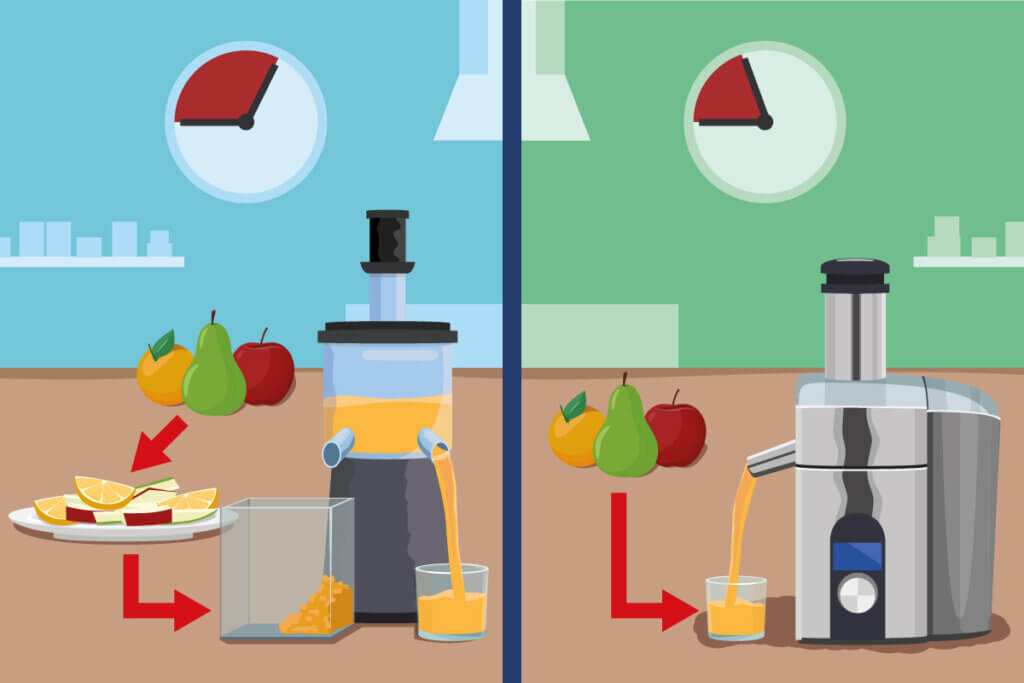
Safety
There are three main features that are essential for safety when it comes to juicers:
- Safety lock: this mechanism prevents the juicer from turning on unless all parts are assembled properly. If you open the lid, the motor will automatically turn off.
- Overheating protection: excessive heat can damage your juicer’s motor. Models with overheating protection automatically turn off if they get too hot to prevent this.
- Anti-slip feet: rubber suction feet ensure your juicer won’t slip or fall while it is working. This is important as they can vibrate quite a lot when in use.
Useful extra features
Some juicers have useful extra features which you might want to consider when making a purchase.

Variable pulp
On some models you can adjust how much pulp you want in the juice. Variable sieves mean you can either make completely smooth juice or make it with different amounts of pulp.
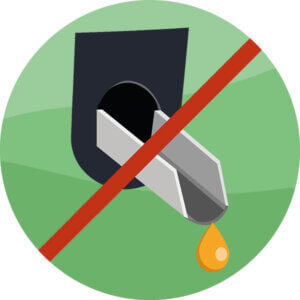
Drip stop
Juicers often lose a few drops of juice after they are switched off. Some drip more, others less, but the result is the same: your kitchen surface is damp and sticky. A drip stop on the juice spout prevents puddles of juice by stopping the juice as soon as the container underneath is removed. This usually works manually. This means you either have to turn the juice spout away, flip it up or close it with a fitted cork.

Foam separator
This is where opinions differ: some like foam in their juice, others do not. Since a lot of machines can send juice straight into the glass, some have foam separators. These special attachments are fitted either directly to the juice tap or to the juice collection container to retain the foam when pouring. This ensures that nothing but pure juice enters your glass.
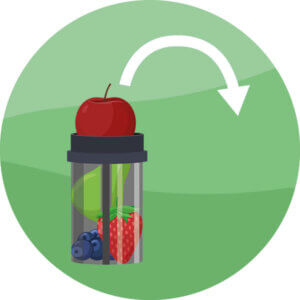
Reverse gear
It can happen that you feed too much fruit into your juicer at once or that a piece gets stuck, and the juicer clogs up. A reverse gear makes clearing blockages quick and easy. Some models have an automatic unclogging feature that puts the juicer into reverse when it senses it is blocked up. Otherwise, you have to press a button manually for a few seconds. Without a reverse gear, you would need to disassemble the juicer to unblock it.
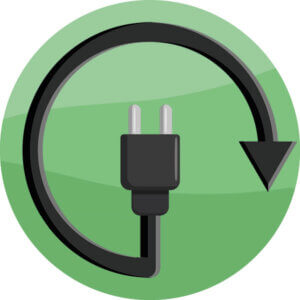
Cable winder
Since you may not be using your juicer every day, a cable winder is a useful thing to have when storing it in your cupboards. They both reduce the amount of space your juicer takes up, as well as protect the power cable.
Usage tips
So, you’ve picked your dream juicer, and now it’s time to try it out. What fruits and vegetables are best to use? How do I clean it? What accessories do I need? Read on for the answers.
What can be put in a juicer
Juicers can turn a wide variety of fruits and vegetables into juice. Depending on the hardness and type of your raw materials, some juicer styles are better than others:
- Green vegetables: you can make juice from greens like spinach, wheatgrass, and more. Slow juicers are best for this.
- Hard fruit and veg: things like apples, beetroot, and carrots are best juiced in a centrifugal juicer.
- Soft fruit and veg: steam juicers are the best option for things like pineapple, berries, and tomatoes.
- Citrus fruits: making orange or lemon juice is best done with a citrus juicer.
There are some things that don’t juice very well, and others that need to be prepared in a certain way beforehand. The following list shares a few pointers:
- Bananas: since they contain a lot of starch, they hardly release any juice. The resulting banana pulp can clog the sieves.
- Apricots: very ripe apricots have a high starch content. Although liquid comes out, the remains stick in the sieve and can also clog the outlet.
- Melon: the skin needs to be removed, but the seeds are fine.
- Beetroot: peel the beetroot beforehand and clean the juicer immediately afterwards so that it does not become permanently stained.
- Citrus fruits: since the peel contains many allergens, remove it before juicing.
- Roots: only roots that have a moist cut surface, such as ginger, are suitable for juicing.
- Stone fruit: except for apricots, stone fruits hardly have any starch, so they juice well when ripe. However, you must remove the seeds from the fruit beforehand.
- Frozen fruit: frozen fruit can only be juiced with a steam juicer. Other juicers would only produce sorbet.
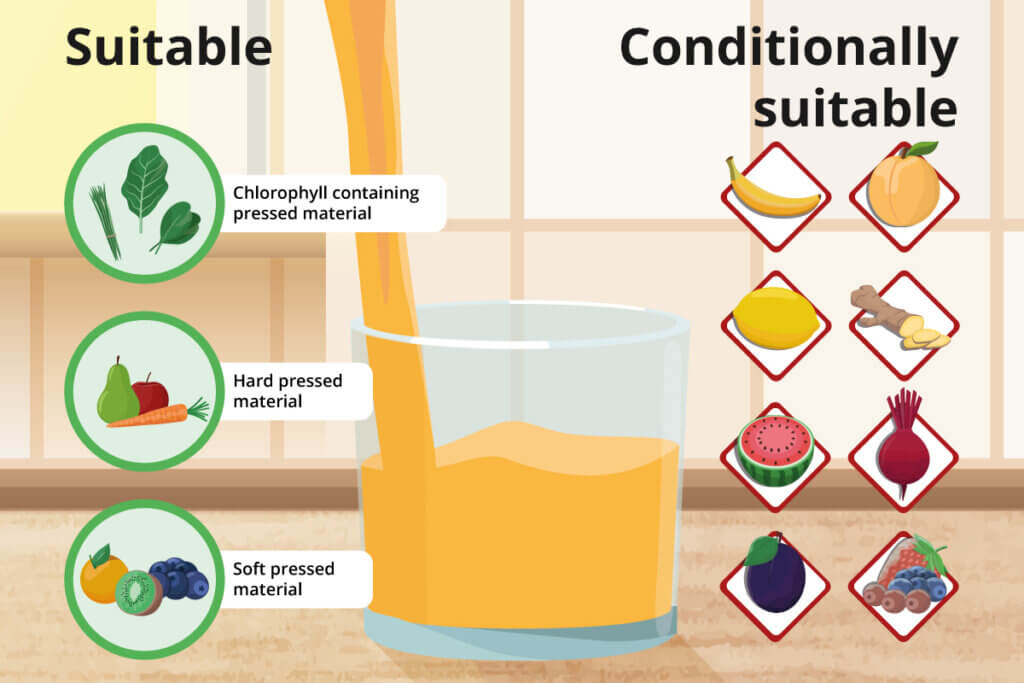
Cleaning
Since food residue in kitchen appliances can lead mold and germs, it is particularly important to clean your juicer thoroughly after each use. It used to take half an hour to clean a juicer, but modern high-quality models often only need a few minutes until they are clean. Ideally, rinse or at least soak the individual parts directly after each use. If you don’t clean your juicer immediately, the residue (a mix of fruit sugar, fibers and moisture) will dry, stick to it and gum up the components. This will make cleaning it considerably longer. The sieves in centrifugal juicers quickly become clogged if you do not completely remove the residue.
With slow juicers, cleaning can be very time-consuming because of all the individual parts. Their feed chute is also quite narrow, so cleaning by hand is not easy. The separate pulp container, on the other hand, is quite simple to clean. Always rinse the container of a juicer with a brush under running water. Often some individual parts are dishwasher-safe, which of course makes the cleaning process much more convenient. However, this does not apply to the motor block or the fine sieve.
Some juicers are self-cleaning, which is extremely useful, as it ensures that the very last drop of juice is removed from the appliance. To do this, the juicer will rinse itself with water when the juice flap is closed, and the motor is running.
Reusing pomace?
After each juicing process, residue from the fruit and vegetables used, known as pomace, remains. Since it still contains many important vitamins and nutrients, don’t throw it away! But how can these leftovers be recycled? Here are a few ideas:
- Bake a carrot cake from the leftover carrots.
- Dry the leftover beetroot to make crispy crackers.
- Use the leftover pumpkin and celery to prepare fiber-rich vegetable patties.
- Use the leftover cucumber for a face mask.
- Use the energy-rich pomace as heating fuel.
- Use the vitamin-rich mixed leftovers as feed for animals.
Buying an automatic dehydrator to process the pomace is also a good idea. Otherwise, you should ideally consume it the same day as making the juice so that the vitamins are preserved. If you don’t manage to use the pomace, you can also compost it and use it as fertilizer.
The recommended daily intake of fruit and vegetables
The World Health Organization recommends eating at least 14 ounces (400 g) of fruit and vegetables a day. This minimizes the risk of fatal cardiovascular diseases. You can easily consume large amounts of fruit and vegetables through juices, but since fruit contains a lot of sugar fructose, they can be quite high in calories. Drinking juice will not fill you up, so you will be eating other meals as well, taking in more calories than you need.
Image 1: © Maridav / stock.adobe.com | Images 2-12: © FinalCheck

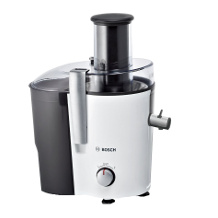
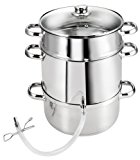
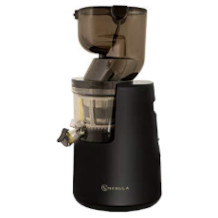


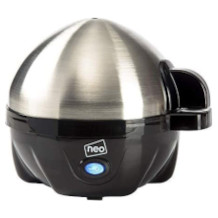
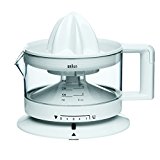
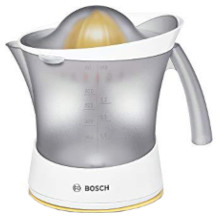
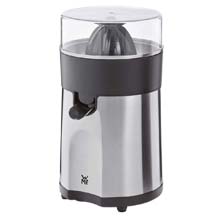

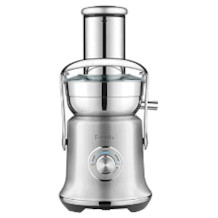
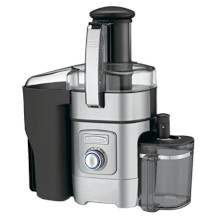
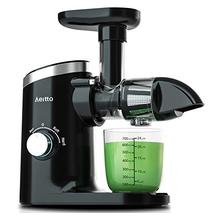
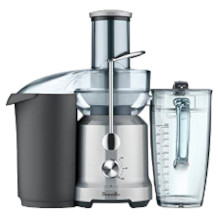
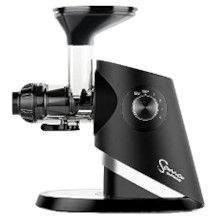
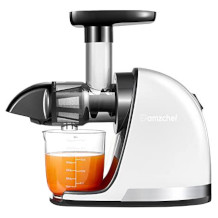
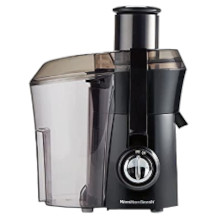

 3,778 reviews
3,778 reviews
